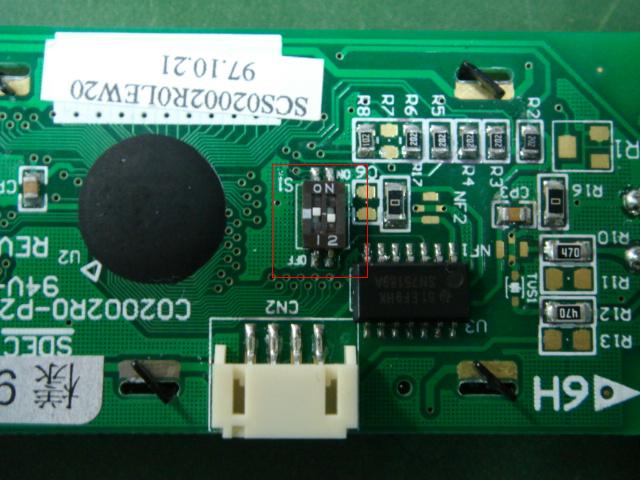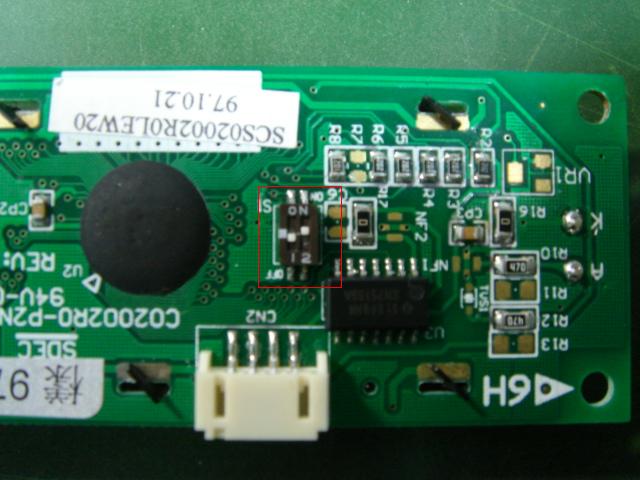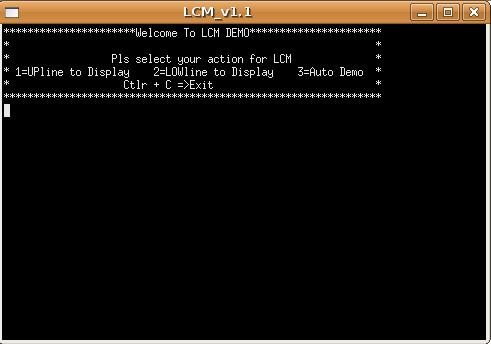請先看『使用說明』
LCM Module:LCM under Linux
From LEXWiKi
(Difference between revisions)
(→Open COM Port Device) |
|||
| Line 25: | Line 25: | ||
== Sample code Introduction == | == Sample code Introduction == | ||
===Open COM Port Device=== | ===Open COM Port Device=== | ||
| - | In Sample code / | + | In Sample code /LCM.cpp lin 25 |
| - | + | portinfo_t portinfo ={ | |
| - | + | '0', // print prompt after receiving | |
| - | + | 9600, // baudrate: 9600 | |
| - | + | '8', // databit: 8 | |
| - | + | '0', // debug: off | |
| + | '0', // echo: off | ||
| + | '0', // flow control:none | ||
| + | '4', // default tty: COM2 | ||
| + | '0', // parity: none | ||
| + | '1', // stopbit: 1 | ||
| + | 0 // reserved | ||
| + | }; | ||
| + | PortSet(fdcom, &portinfo); | ||
| + | /*******************init to clear the Screen*******************/ | ||
| + | fdcom = PortOpen(&portinfo); //Open the COM port devices | ||
| + | PortSend(fdcom, &clrcom, C8); //Clear All screen message | ||
===Close COM Port Device=== | ===Close COM Port Device=== | ||
Revision as of 19:02, 4 February 2009
Contents |
The Sample code source you can download form
Source file: LCM_src_v11.tar.gz
Binary file: LCM_v11.tar.gz
How to Switch functions
Our LCM module can support TTL and RS232 type,Please make sure your serial port support type,
And switch LCM JUMP as below picture!!
How to use the DEMO application
- Key-in 1 then Key-in message for UP line
- Key-in 2 then Key-in message for LOW line
- Key-in 3 then Key-in message for message Auto-Show
Notes:We use the number char for line switch ,whereby this DEMO Application doesn't support number char display(0~9)!!
Sample code Introduction
Open COM Port Device
In Sample code /LCM.cpp lin 25
portinfo_t portinfo ={
'0', // print prompt after receiving
9600, // baudrate: 9600
'8', // databit: 8
'0', // debug: off
'0', // echo: off
'0', // flow control:none
'4', // default tty: COM2
'0', // parity: none
'1', // stopbit: 1
0 // reserved
};
PortSet(fdcom, &portinfo);
/*******************init to clear the Screen*******************/
fdcom = PortOpen(&portinfo); //Open the COM port devices
PortSend(fdcom, &clrcom, C8); //Clear All screen message
Close COM Port Device
In Sample code /LCD_CTLDlg.cpp lin 171
m_SerialPort.ClosePort(); //Set COM port close m_bSerialPortOpened=FALSE;
Send the UP line message to LCM Device
In Sample code /LCD_CTLDlg.cpp lin 183
if(!m_bSerialPortOpened) return; //check the com port was open
UpdateData(TRUE);
char szSend[30] = {0x1b, 0x51, 0x41}; //0x1b , 0x51 ,0x41 for LCM send UPline command
sprintf(szSend+3, "%s\r", m_Sendmsg);
m_SerialPort.WriteToPort(szSend); //Write command and message to LCM device
Send the LOW line message to LCM Device
In Sample code /LCD_CTLDlg.cpp lin 215
UpdateData();
char szSend[30] = {0x1b, 0x51, 0x42}; //0x1b , 0x51 ,0x42 for LCM send LOWline command
sprintf(szSend+3, "%s\r", m_Sendmsg2);
m_SerialPort.WriteToPort(szSend); //Write command and message to LCM device



